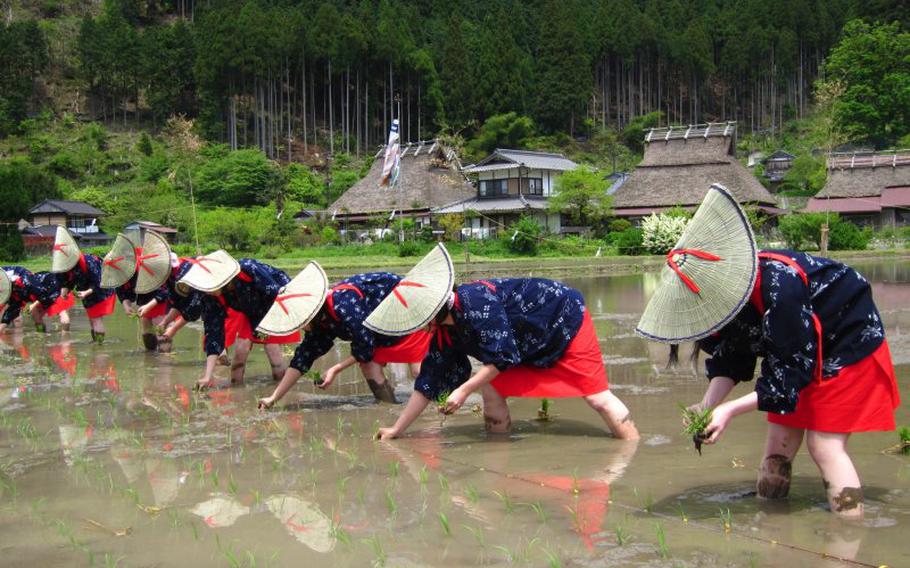Introduction: Tradition Meets the Fields of Kyoto
Kyoto, Japan's cultural capital, is not only known for its ancient temples, Zen gardens, and tea ceremonies—it also celebrates a deep connection with the land through agricultural festivals. These events mark the turning of the seasons and honor the farmers who sustain Japan's rich food culture.

What makes these celebrations even more fascinating is the kimono, Japan's most iconic garment, worn proudly by participants and spectators alike. From harvest rituals in rural shrines to vibrant city parades, Kyoto provides the perfect setting to witness how kimonos and agricultural traditions intertwine, creating a living expression of Japanese heritage.
Whether you are a cultural enthusiast, a traveler seeking authentic experiences, or a photographer aiming to capture timeless beauty, Kyoto's agricultural festivals offer endless inspiration.
👉 For a complete cultural experience in Kyoto, book your professional kimono photoshoot at AllPhotos Kyoto.
1. The Roots of Agricultural Festivals in Japan
Agriculture has been at the heart of Japanese life for millennia. Rice, in particular, has been central not only as a staple food but also as a spiritual symbol of prosperity. Shinto, Japan's indigenous religion, is filled with rituals honoring agricultural deities.
- Niiname-sai (新嘗祭): The "Harvest Festival" where the Emperor offers rice to the gods.
- Aki Matsuri (秋祭り): Local autumn festivals thanking the deities for abundant crops.
- Taue-sai (田植祭): Rice-planting festivals that celebrate community unity and fertility.
In Kyoto, these traditions are preserved in shrines, temples, and rural communities, blending ancient spirituality with local pride.

2. Why Kimonos Play a Central Role
Wearing a kimono to these events is not simply about fashion—it is about cultural respect and identity.
- Symbol of Seasonality: Kimono fabrics and motifs reflect the time of year. For harvest festivals, colors like deep orange, red, and earthy tones dominate.
- Community Connection: Families dress in coordinated styles to express harmony.
- Spiritual Dimension: Wearing a kimono shows reverence when visiting shrines.
For visitors in Kyoto, renting or purchasing a kimono is more than a tourist activity—it allows you to participate authentically in a centuries-old tradition.

3. Major Agricultural Festivals in Kyoto
a) Kurama Fire Festival (鞍馬の火祭, October 22)
Held at Yuki Shrine, this fiery festival honors the harvest and the gods of the land. Locals wear traditional clothing, carry torches, and celebrate fertility and prosperity.
Photography Opportunity: Dramatic contrasts of flames and fabric patterns.
b) Fushimi Inari Harvest Rituals
Fushimi Inari Taisha, famous for its thousand torii gates, also hosts agricultural ceremonies dedicated to Inari, the rice deity. Farmers and priests in ceremonial kimono offer rice and sake.

Photography Opportunity: Capturing worshippers ascending the shrine paths.
c) Kamo Shrines' Rice Festivals
The twin Kamo shrines (Kamigamo and Shimogamo) host rituals where rice planting and harvest are reenacted. These shrines are UNESCO World Heritage Sites, offering both sacred atmosphere and scenic backdrops.
Photography Opportunity: Wide shots of rituals under ancient trees.
d) Rural Autumn Festivals in the Kyoto Countryside
Beyond the city, rural communities like Ohara and Kameoka preserve harvest celebrations with mikoshi (portable shrines), dances, and music. These intimate gatherings show the heart of agricultural Kyoto.

Photography Opportunity: Smiles of locals working together in fields and shrines.
4. Seasonal Kimono Styling for Festivals
Each agricultural celebration aligns with the Japanese concept of seasonality (kisetsukan 季節感). Wearing a kimono means aligning with nature:
- Autumn (Aki): Maple leaves, rice stalks, persimmons on fabric patterns.
- Winter Festivals: Plum blossoms, cranes, and pine motifs.
- Accessories: Obi belts in golden or earthy tones, straw sandals for rustic charm.
👉 Want to preserve these memories? Book a professional kimono photography session at AllPhotos Kyoto.
5. Experiencing Kyoto's Festivals as a Visitor
Practical Tips:
- Timing: Most harvest festivals occur between September and November.
- Kimono Rental: Kyoto offers specialized shops for seasonal kimono.
- Etiquette: Bow when entering shrines, avoid blocking processions.
- Photography: Always ask before photographing private participants.
6. The Role of Food in Harvest Celebrations
Agricultural festivals are inseparable from seasonal cuisine:

- Freshly harvested rice steamed in bamboo.
- Chestnut rice (kuri-gohan) during autumn.
- Sake brewed from new rice harvests.
These flavors make the festivals a multi-sensory celebration where taste, sight, and tradition merge.
7. Why Agricultural Festivals in Kyoto Are Unique
Unlike modern events in Tokyo, Kyoto preserves a deeply spiritual approach to agricultural traditions. The combination of ancient shrines, seasonal kimono, and ritual practices makes it one of the most authentic experiences in Japan.
- Authenticity: Rooted in centuries of Shinto practice.
- Visual Splendor: Kimono patterns blend perfectly with shrine colors.
- Cultural Depth: Kyoto is the cultural heart of Japan—tradition lives here.

Conclusion: Tradition in Every Thread
Kyoto's agricultural festivals are more than seasonal gatherings—they are living heritage. By wearing a kimono, joining rituals, and enjoying seasonal foods, you become part of a tradition that links Japan's past with its present.
For travelers, these festivals offer a once-in-a-lifetime chance to capture beauty through the lens, especially when paired with professional guidance.
👉 Make your Kyoto trip unforgettable. Book your kimono photoshoot with AllPhotos Kyoto today and celebrate the harvest season in style.